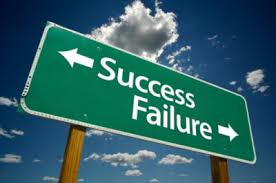First, think about your time as money!
We’ll get to my heartbreak in a minute. But first… There is a relationship between time and money that is more complex than most managers think. Fixed overhead for salaries, rent, equipment leases and more make up the majority of the “burn rate” (monthly expenses) for most companies. Since this number is budgeted and pre-authorized, managers tend to focus upon other things such as sales, marketing and product development issues.
and money that is more complex than most managers think. Fixed overhead for salaries, rent, equipment leases and more make up the majority of the “burn rate” (monthly expenses) for most companies. Since this number is budgeted and pre-authorized, managers tend to focus upon other things such as sales, marketing and product development issues.
The art of good management.
There is an art to efficient management of a process, whether that is the process of bringing a product to market from R&D to production or developing a new product’s launch program. What most managers miss is that every month cut from the time it takes to perform such tasks cuts the cost by the value of a month’s worth of fixed overhead or burn.
How about young or pre-revenue companies?
Although young companies rarely measure profitability this repeatedly, more mature companies usually can bring from five to ten percent of revenues to the bottom line in the form of net profit. Ignoring the cost of product for a moment to make a point, saving a month’s fixed overhead by making processes more efficient, could easily double profits for the year.
Time and fixed overhead:
[Email readers, continue here…] That relationship between fixed overhead and production time is as critical as any other factor in the success of a young company. Many of the start-ups my various angel funds have financed died a slow death, not because of poor concept but because of poor execution, wasting fixed overhead and draining the financial resources from the company coffers.
 The financial pain of unplanned delays.
The financial pain of unplanned delays.
In the technology sector where I most often play, extended unplanned software development cycles account for the majority of these corporate failures. We often accept that development schedules for young companies are almost always too optimistic. But we investors often allow too little slack in our estimates as well.
Underestimating time to completion:
The great majority of young companies developing complex products such as semiconductor-based products, new software-based systems and technologies based upon new processes greatly underestimate the time needed to bring the product to marketable condition. So, the CEO comes back “to the well”, asking for more money from the investors to complete the project. It is not a strong bargaining position for the CEO to ask for money to complete a product promised for completion with the previous round of funding. And professional investors often penalize the company with lower-priced down rounds or expensive loans as a result.
Now: my story of investor-product-market misfit:
I have one story that remains as vivid in my mind as when it happened several years ago. Helping the founder create a company and build a much-needed product in an industry I knew very well, I served as chairman for the newly formed company, and along with my several rounds of early investment, led rounds of other angel investors in what I knew as a successful opportunity to fill a need in an industry I understood.
Growth before the VC arrived was not a problem.
The company grew to be well known in this limited niche and was operating at slightly above breakeven, when the Board and CEO decided to seek venture investment from what we hoped would be a first tier VC firm in Silicon Valley. And we were able to secure that investment along with a partner from that firm joining our board. It did not take long for the partner to become impatient with the relatively small size of the opportunity. Dreaming of a company many times the size, he led the board to approve a complete reversal of course, even stating that the company should ignore the existing market niche completely and redesign the product for the broad Fortune 500 corporate market.
My role as chairman and acceding to the VC’s plan:
Every one of us on the board expressed our concern that the time to make these product changes and position for the new, broader market, would eat away all the company’s capital. Promising the full weight of his VC firm’s resources, the board voted to make the change against the best judgment of those of us who knew the original market niche so well and thought that there was growth to spare in that niche alone.
…and the result of not listening to our gut?
So, the company turned the ship, slowly it seemed, as R&D worked to develop an appropriate product using the base of the original design. Time slipped; fixed overhead continued. And exactly as you’d expect, there came the time when the company ran out of money as it ignored its original market.
Surprise?
Since the company slipped in its R&D schedule, the partners of the VC firm voted to not add new money to the company for the project. Not long after, the company was sold in a “fire sale” amounting to slightly less than the debt on the books. All investors, including the VC firm, lost everything. Do you remember a previous insight, that “the last money in has the first say”? That is what happened within the dynamic of the board, and the result is that the board was completely at the mercy of the “last money” VC to save the company in the end. Yes, there were other issues such as a protracted patent rights fight that drained cash, but the largest problem, inefficient use of R&D time burning fixed overhead, led to the demise of the company. Lots of good jobs were lost and many investors including me were left with the question. “Why did the company abandon a profitable market, even if it could not generate $100 million a year in revenues?”
add new money to the company for the project. Not long after, the company was sold in a “fire sale” amounting to slightly less than the debt on the books. All investors, including the VC firm, lost everything. Do you remember a previous insight, that “the last money in has the first say”? That is what happened within the dynamic of the board, and the result is that the board was completely at the mercy of the “last money” VC to save the company in the end. Yes, there were other issues such as a protracted patent rights fight that drained cash, but the largest problem, inefficient use of R&D time burning fixed overhead, led to the demise of the company. Lots of good jobs were lost and many investors including me were left with the question. “Why did the company abandon a profitable market, even if it could not generate $100 million a year in revenues?”
We will revisit the relationship between time and money again in future insights.




 for hotels and resorts grew quickly, we found ourselves straining to keep up with the hiring and training of good customer support representatives, a critical part of the equation then and still so today in the 24-hour environment of hotel front desk operations.
for hotels and resorts grew quickly, we found ourselves straining to keep up with the hiring and training of good customer support representatives, a critical part of the equation then and still so today in the 24-hour environment of hotel front desk operations.
 cause simple problems, you are right.
cause simple problems, you are right. It becomes obvious then that there must be a balance somewhere between rushed release and too much rigor in pre-release planning and testing. Perhaps that balance can be measured in estimating what a company could endure in lost overhead and hits to reputation before becoming crippled and unable to recover. With that measure based upon pure estimates, the balance point changes between companies, with the largest, most profitable companies able to suffer the most risk as to resources, and the smallest suffering by far the most when measuring reputation.
It becomes obvious then that there must be a balance somewhere between rushed release and too much rigor in pre-release planning and testing. Perhaps that balance can be measured in estimating what a company could endure in lost overhead and hits to reputation before becoming crippled and unable to recover. With that measure based upon pure estimates, the balance point changes between companies, with the largest, most profitable companies able to suffer the most risk as to resources, and the smallest suffering by far the most when measuring reputation. and money that is more complex than most managers think. Fixed overhead for salaries, rent, equipment leases and more make up the majority of the “burn rate” (monthly expenses) for most companies. Since this number is budgeted and pre-authorized, managers tend to focus upon other things such as sales, marketing and product development issues.
and money that is more complex than most managers think. Fixed overhead for salaries, rent, equipment leases and more make up the majority of the “burn rate” (monthly expenses) for most companies. Since this number is budgeted and pre-authorized, managers tend to focus upon other things such as sales, marketing and product development issues. The financial pain of unplanned delays.
The financial pain of unplanned delays. add new money to the company for the project. Not long after, the company was sold in a “fire sale” amounting to slightly less than the debt on the books. All investors, including the VC firm, lost everything. Do you remember a previous insight, that “the last money in has the first say”? That is what happened within the dynamic of the board, and the result is that the board was completely at the mercy of the “last money” VC to save the company in the end. Yes, there were other issues such as a protracted patent rights fight that drained cash, but the largest problem, inefficient use of R&D time burning fixed overhead, led to the demise of the company. Lots of good jobs were lost and many investors including me were left with the question. “Why did the company abandon a profitable market, even if it could not generate $100 million a year in revenues?”
add new money to the company for the project. Not long after, the company was sold in a “fire sale” amounting to slightly less than the debt on the books. All investors, including the VC firm, lost everything. Do you remember a previous insight, that “the last money in has the first say”? That is what happened within the dynamic of the board, and the result is that the board was completely at the mercy of the “last money” VC to save the company in the end. Yes, there were other issues such as a protracted patent rights fight that drained cash, but the largest problem, inefficient use of R&D time burning fixed overhead, led to the demise of the company. Lots of good jobs were lost and many investors including me were left with the question. “Why did the company abandon a profitable market, even if it could not generate $100 million a year in revenues?”
 If you must provide a free backup unit, personal on-site service for a month, your personal cell phone number for the customer CEO, or any number of unexpected offers of superior service and accountability to those first customers, do just that. Make your customer a partner in the process. Send flowers to the staff in the department using the product for the first time if appropriate. Call the customer CEO and thank him for helping launch a product so very important to your success.
If you must provide a free backup unit, personal on-site service for a month, your personal cell phone number for the customer CEO, or any number of unexpected offers of superior service and accountability to those first customers, do just that. Make your customer a partner in the process. Send flowers to the staff in the department using the product for the first time if appropriate. Call the customer CEO and thank him for helping launch a product so very important to your success. the notion of the “teacher-customer” years ago. I internalized this phrase, recalling the many times I had partnered with customers to design new feature-functionality into my hotel computer system back when such systems were brand new to the industry. It was an ideal partnership for my growing company, as it approached one hundred employees on the way to almost two hundred fifty and selected special customers anxious and willing to spend time telling us of their pain points.
the notion of the “teacher-customer” years ago. I internalized this phrase, recalling the many times I had partnered with customers to design new feature-functionality into my hotel computer system back when such systems were brand new to the industry. It was an ideal partnership for my growing company, as it approached one hundred employees on the way to almost two hundred fifty and selected special customers anxious and willing to spend time telling us of their pain points.
 stated by German Field Marshall von Moltke in the 19th century.
stated by German Field Marshall von Moltke in the 19th century. My excitement in having developed so many new and “somewhat tested” features over a sleepless weekend was exceeded only by the enthusiasm of the entire hotel staff for the new and wonderful capabilities left behind after the magic weekend of non-stop programming. These trips were so common and their aftermath so predictable (a late-night emergency repair call waiting for me at home upon return Sunday evening) that the hotel owner created a mantra that stuck with me and caused quite a laugh at my expense for years. He would be sure to remind his staff, shaking my hand goodbye as I left in a hurry to catch that Sunday evening flight: “Wheels up, system down.” And that’s the result of “cowboy coding.” Ouch!
My excitement in having developed so many new and “somewhat tested” features over a sleepless weekend was exceeded only by the enthusiasm of the entire hotel staff for the new and wonderful capabilities left behind after the magic weekend of non-stop programming. These trips were so common and their aftermath so predictable (a late-night emergency repair call waiting for me at home upon return Sunday evening) that the hotel owner created a mantra that stuck with me and caused quite a laugh at my expense for years. He would be sure to remind his staff, shaking my hand goodbye as I left in a hurry to catch that Sunday evening flight: “Wheels up, system down.” And that’s the result of “cowboy coding.” Ouch! you developed a prototype, alternate pricing schemes, even a PowerPoint mockup to show to potential buyers? I would be very, very nervous without testing the product in the market as early as possible, ready to make changes and enhancements before committing to production and release.
you developed a prototype, alternate pricing schemes, even a PowerPoint mockup to show to potential buyers? I would be very, very nervous without testing the product in the market as early as possible, ready to make changes and enhancements before committing to production and release.
 Four- and five-star hotels loved the concept, which included redirecting outgoing calls from the cell phone by the guest to be sent through the hotel’s land line switch, making the hotel a miniature phone company with its attendant profits.
Four- and five-star hotels loved the concept, which included redirecting outgoing calls from the cell phone by the guest to be sent through the hotel’s land line switch, making the hotel a miniature phone company with its attendant profits. partners in firms that made subsequent investments in companies where I either made early investments or led a group of fellow investors in early rounds of finance. Each of these companies needed more cash than professional angel investors were willing or able to provide, and we turned to the venture community for larger investments.
partners in firms that made subsequent investments in companies where I either made early investments or led a group of fellow investors in early rounds of finance. Each of these companies needed more cash than professional angel investors were willing or able to provide, and we turned to the venture community for larger investments. In one such case, the angels were tapped out at $6 million invested, an amount far above their usual taste, but for a company we thought had a billion-dollar potential. The VCs subsequently invested $18 million, well beyond what angel investors usually can project from their own resources. Without the VC guidance there would have been little opportunity to even dream of a billion-dollar valuation goal. There is no question that the company took smart money and leveraged it for maximum growth, using the money, guidance, contacts and more from these large VC investors.
In one such case, the angels were tapped out at $6 million invested, an amount far above their usual taste, but for a company we thought had a billion-dollar potential. The VCs subsequently invested $18 million, well beyond what angel investors usually can project from their own resources. Without the VC guidance there would have been little opportunity to even dream of a billion-dollar valuation goal. There is no question that the company took smart money and leveraged it for maximum growth, using the money, guidance, contacts and more from these large VC investors. professional investors negotiate tough terms, from provisions of control over asset acquisition, eventual sale of the company, future investments, forced co-sale when others attempt to sell their shares and more. And yet, in an earlier post, we spoke of the problems that come when taking unstructured investments from friends and family.
professional investors negotiate tough terms, from provisions of control over asset acquisition, eventual sale of the company, future investments, forced co-sale when others attempt to sell their shares and more. And yet, in an earlier post, we spoke of the problems that come when taking unstructured investments from friends and family. Remember the admonition that investment from such close sources carries an additional burden for you – to protect your investors and their investment as if they were your alter egos, offering money as if from your own pocket. Such money should never be taken without clear understanding of the terms, whether a loan with a reasonable interest rate and strict repayment terms, or an investment valuing the company at an amount considered reasonable by a third-party professional, even if as a sanity check as opposed to an appraisal. This money is personal, an investment in you as much or more than in your company. The degree of care you take increases with the reduced distance between you and your investor.
Remember the admonition that investment from such close sources carries an additional burden for you – to protect your investors and their investment as if they were your alter egos, offering money as if from your own pocket. Such money should never be taken without clear understanding of the terms, whether a loan with a reasonable interest rate and strict repayment terms, or an investment valuing the company at an amount considered reasonable by a third-party professional, even if as a sanity check as opposed to an appraisal. This money is personal, an investment in you as much or more than in your company. The degree of care you take increases with the reduced distance between you and your investor.